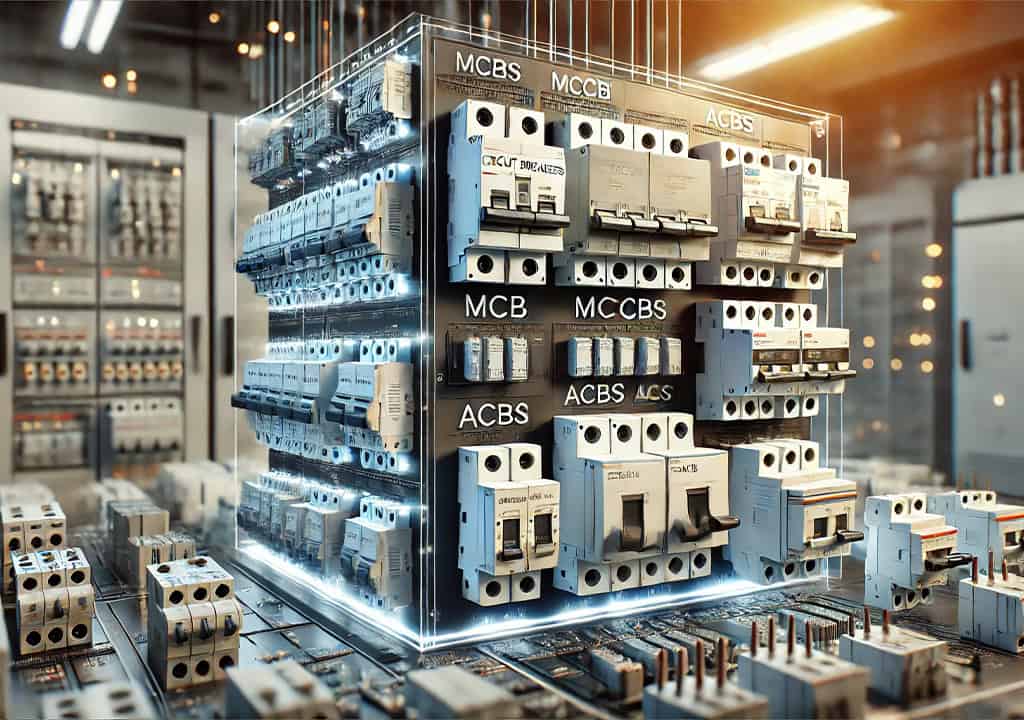When designing or upgrading an electrical system, choosing the right circuit breaker is essential for ensuring safety, protecting equipment, and maintaining reliable operations. Circuit breakers are designed to interrupt the flow of electricity in the event of an overload, short circuit, or other electrical fault, preventing damage to equipment and reducing the risk of fire or injury. However, selecting the wrong type of circuit breaker can lead to system malfunctions or inadequate protection.
In this blog, we’ll guide you through the key factors to consider when selecting a circuit breaker for your project.
- Understand Your System’s Requirements
Before choosing a circuit breaker, you need to thoroughly understand the electrical specifications of your project. This involves determining the voltage, current, and frequency levels that the breaker will need to handle. For example, residential projects typically use low-voltage (LV) circuit breakers, while industrial applications might require medium or high-voltage options.
Additionally, assess whether the system will experience varying loads, as this may influence the need for more advanced breaker types like those with adjustable trip settings.
- Types of Circuit Breakers
There are several types of circuit breakers, each suited to different applications:
Miniature Circuit Breakers (MCB): Designed for low-current, low-voltage applications like residential or small commercial buildings. MCBs are commonly used to protect lighting and small appliances.
Molded Case Circuit Breakers (MCCB): These breakers are used for higher power applications and can handle a wider range of currents. They are ideal for protecting motors and industrial equipment.
Air Circuit Breakers (ACB): Typically used for low-voltage applications but in larger installations, such as in industrial plants or large commercial buildings.
Residual Current Circuit Breakers (RCCB): These breakers are designed to protect against earth faults or leakage currents. RCCBs are critical for preventing electrical shocks.
Motor Protection Circuit Breakers (MPCB): Specifically designed to protect electric motors from overload, short circuits, and phase failures, which is essential in industrial applications.
- Breaking Capacity (Short-Circuit Rating)
The breaking capacity or interrupting capacity is the maximum fault current that a circuit breaker can safely interrupt without damage. This rating is crucial for ensuring that the breaker can handle the highest possible short-circuit current in your system. It’s important to select a breaker with a breaking capacity that exceeds the highest fault level in your system to prevent catastrophic failures.
For example, in industrial settings where high short-circuit currents are possible, breakers with higher interrupting capacities are necessary. On the other hand, residential or small commercial applications might only require low breaking capacities.
- Consider the Trip Mechanism
Circuit breakers use different trip mechanisms to detect faults and interrupt the current. The most common types are:
Thermal-Magnetic Trip: Combines a bimetallic strip for overload protection (thermal) with an electromagnet for short-circuit protection (magnetic). These are commonly used in residential and commercial applications.
Electronic Trip Units: Found in more advanced breakers, these units provide precise protection settings and are often used in industrial applications where adjustable protection is needed.
Hydraulic-Magnetic Trip: These breakers are not affected by temperature changes and are ideal for applications where temperature fluctuations might affect performance, such as marine environments or outdoor installations.
- Number of Poles
The number of poles in a circuit breaker determines how many separate electrical circuits it can control. Common configurations include:
Single-Pole Breakers: Used in most residential applications to protect a single phase of a power circuit.
Double-Pole Breakers: These protect two-phase circuits, which are commonly used for large appliances like air conditioners or electric ovens.
Three-Pole Breakers: Primarily used in industrial and commercial settings to control three-phase electrical systems.
Choosing the right number of poles depends on the type of electrical system your project requires.
- Environmental Conditions
The environment in which the circuit breaker will be installed plays an important role in your selection. Harsh environments, such as industrial plants or outdoor installations, may require circuit breakers with special enclosures that protect against dust, moisture, or extreme temperatures.
For example, IP-rated enclosures (Ingress Protection) are necessary for breakers in environments exposed to water or debris. Additionally, in environments with high ambient temperatures, breakers with de-rating options may be needed to ensure proper operation without overheating.
- Compliance with Standards
Always ensure that the circuit breaker you choose complies with relevant industry standards. The most common standards for circuit breakers include:
IEC (International Electrotechnical Commission) standards, which are widely used globally.
UL (Underwriters Laboratories) certification for breakers used in North America.
EN (European Norms) for use in European countries.
Compliance with these standards ensures that the breakers meet minimum safety, performance, and reliability requirements.
- Budget Considerations
While it’s essential to choose a breaker that meets all your technical and environmental needs, it’s also important to stay within your budget. When balancing cost and quality, keep in mind that selecting a lower-quality breaker may save money initially but could result in costly repairs or replacements down the line due to system failures or inadequate protection.
Conclusion
Choosing the right circuit breaker for your project is a crucial step in ensuring the safety, reliability, and longevity of your electrical system. By considering factors such as your system’s requirements, breaker type, trip mechanism, breaking capacity, and environmental conditions, you can select a circuit breaker that meets your needs and provides robust protection.
At Trust Deal, we offer a comprehensive selection of circuit breakers from leading brands like Schneider and ABB, ensuring you get the best in quality and performance. Whether you’re working on a residential, commercial, or industrial project, our expert team is here to help you find the right circuit breaker for your needs. Contact us today to learn more!





